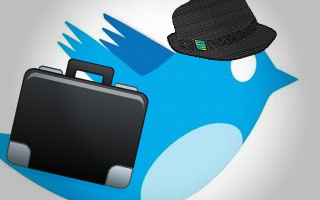
… [My sister] never really took to Twitter. When I asked her last year why she rarely Tweeted, she said, “Twitter is too confusing.”
That complaint, which I have often heard from others who work outside the technology industry, never made sense to me. That is, until now.
This learning curve is certainly one of the barriers to mainstream adoption for Twitter. But I think there are more fundamental problems that could trip Twitter up on the road to mainstream adoption.
[aditude-amp id="flyingcarpet" targeting='{"env":"staging","page_type":"article","post_id":351005,"post_type":"guest","post_chan":"none","tags":null,"ai":false,"category":"none","all_categories":"social,","session":"D"}']First, consider the following stats:
- In a recent study by Yahoo Research, 50 percent of the most influential tweets consumed are reportedly generated from just 20,000 elite users — though these posts do not always originate from these 20k accounts.
- Nielsen estimated that user-retention rates were around 40 percent. This, more than the number of total Twitter users is the most critical of numbers in this discussion. A lot of people are checking out this Twitter thing, but judging by this stat, many have no idea what to do with it when they get there.
To be sure, Twitter is a modern day sensation, experiencing hyper-growth to the 50 million users it has to date, helping to topple governments the world-over (Malcolm Gladwell’s speculation notwithstanding). But the holy grail of any consumer product or service is mainstream adoption. 50 million users is nice, but [Facebook’s] 800 million is nicer. Mainstream adoption brings with it the kind of industry leadership position that helps you stave off disruptive newcomers and gives you the ability to expand into new areas.
AI Weekly
The must-read newsletter for AI and Big Data industry written by Khari Johnson, Kyle Wiggers, and Seth Colaner.
Included with VentureBeat Insider and VentureBeat VIP memberships.
So Twitter has two key questions to answer for the mainstream audience (think non-techie):
- Why should I sign up?
And, when I get there:
- What should I do with it?
First, why should I sign up?
When Apple first launched the iPad, it was introducing an entirely new computing paradigm to consumers. What do I need a tablet for? How do I use it? Apple was faced with a significant education/evangelism challenge that it had to nail if it was going to see significant consumer uptake.
Apple met the challenge by showing users of the iPad in various users scenarios — using email, browsing the web, buying books — so as to educate the market about how to use the new device.
It might be time for Twitter to do the same. Maybe Twitter should develop some TV and traditional print ads that show the mainstream audience how Twitter could be used to enhance their lives. Different use cases could be used to appeal to distinct kinds of users:
[aditude-amp id="medium1" targeting='{"env":"staging","page_type":"article","post_id":351005,"post_type":"guest","post_chan":"none","tags":null,"ai":false,"category":"none","all_categories":"social,","session":"D"}']
- ‘Inform Me’ Users: These users want deep and timely information on the world around them. They want links to content that go beyond what the traditional television news and the same tired bookmarks can provide them (but may not know that Twitter could be the answer to their quest). I had my own aha moment as to the power of Twitter the night Bin Laden’s death was announced. I was messing around on Twitter while watching a baseball game when the news broke on Twitter that the President was to announce Bin Laden had been killed. While tuning in to the mainstream news immediately after this occurred, it was clear they were getting their information from Twitter themselves.This situation seems tailor made for a TV commercial. It couldn’t have been scripted better. The news broke on Twitter. Someone on the ground in Pakistan unknowingly tweeted about the raid as it was happening. Commentary and analysis from numerous sources followed, and the mainstream media clearly fell short of what Twitter could do in both speed and breadth of information. There are numerous ways a clever ad could convince ‘Informed Users’ that they could benefit from signing up to Twitter. For a percentage of ‘Informed Users,’ Twitter is the exact thing they have been looking for, they just don’t know it yet.
- ‘Social’ Users: Social users are socially active online users who are always looking for ways to stay in closer touch with friends. Their portion of the ad should, of course, show how Twitter can enhance their personal relationships and stay in closer touch with friends.
- Celebrity Watchers: Some of Twitter’s most-followed users are celebrities (think Justin Bieber, Kim Kardashian…). Celebrity watchers are enamored with connecting with celebrities, and their portion of the TV ad could show how they could hear directly from their favorite personalities.
- Learn-From-the-Experts Users: These users might be delighted to find out they can learn directly from the experts in their field, hear their take on industry developments or read what the experts are reading.
Of course there is crossover – users who fall into multiple categories – but that’s the beauty of a commercial that would address multiple user scenarios and is just another argument for why a TV ad showing the multiple use cases makes sense.
So that’s the ‘why should I sign up’? problem. The ‘what should I do once I get there?’ is a whole ‘nother blog post, but it starts with better guidance to the user once they log in for the first time (grouping interesting users by category, as Twitter does now, is not enough). And educating users via TV ads about what they can get out of Twitter before they sign up will help them to pursue what they are looking for once they do.
VentureBeat's mission is to be a digital town square for technical decision-makers to gain knowledge about transformative enterprise technology and transact. Learn More
